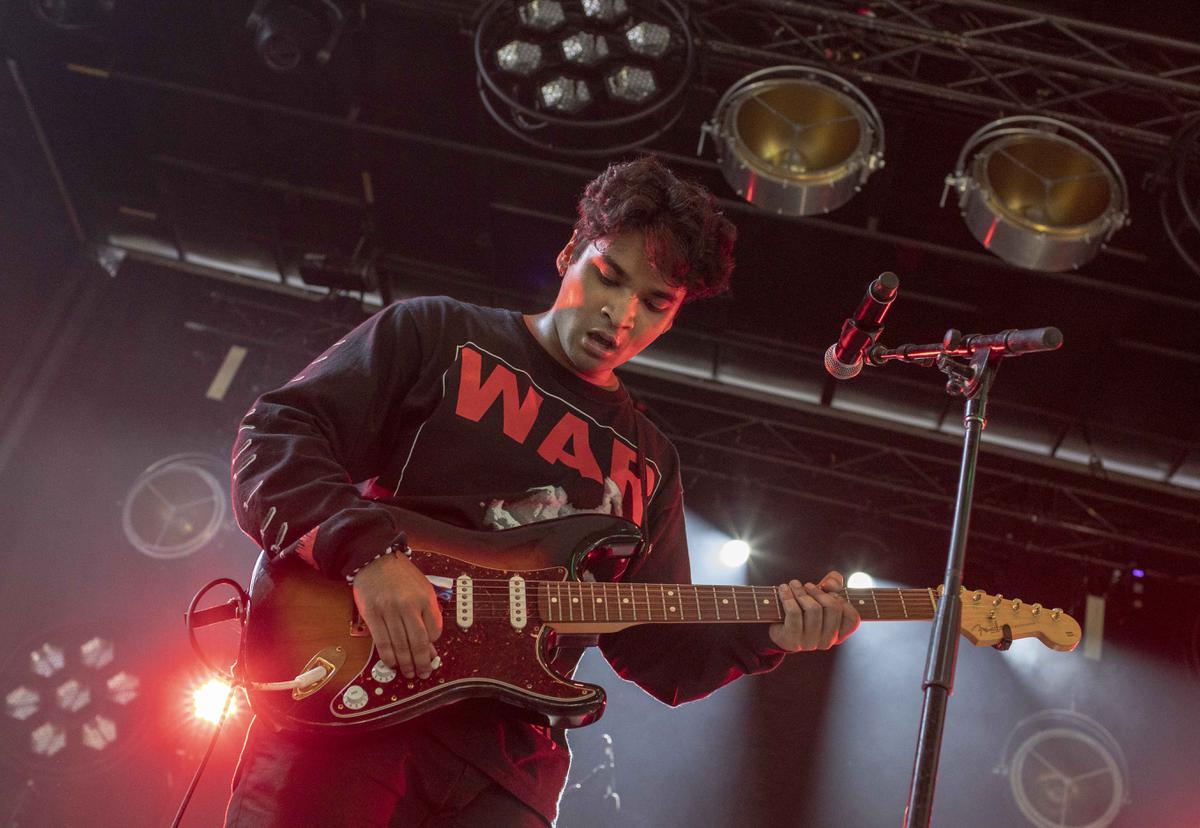From a band that seems so effortlessly cool, one might expect a certain degree of aloofness from the members of Boston-based dream rock project Roy Juno. Seated around a plastic table in a dusty canvas tent, however, all four members were positively glowing with pride following their Aug. 2 performance at Osheaga.
“It’s one of those stories I’ll tell my grandkids,” songwriter Sayak Das said in an interview with The McGill Tribune of the experience of recording Roy Juno’s first EP Gone Mad from his house in Boston, Massachusetts. “[…] You know, like about how I was pretty much naked in my room with the AC off so I could record vocals properly—it was so hot and it was so muggy that we barely get anything done […] or about how these guys cleared out the living room and set up the drum set, and they all recorded at the same time! Which is badass!”
Indeed, though the band is barely a year old, Roy Juno’s story is already one worth hearing. Following the dissolution of their two-person project, Dreamer and Son, Das and drummer Josh Parra met bassist Henri Young at an audition for a wedding band. Having recently graduated from the Berklee College of Music, Das and Parra were searching for a team to realize an artistic vision they’d been unable to achieve on their own. Their connection was near instantaneous, and it was not long before the three musicians were writing and recording together. Lead guitarist James Marino would become the final piece of the puzzle when he joined Roy Juno in Dec. 2018.
The creative chemistry between Roy Juno’s four members is immediately apparent from their recordings, and it is always a pleasant experience to encounter that same chemistry live, on stage, and in conversation.
“Every aspect of every skill that we have is showcased in this band,” Das said.“[…] and that was a tough thing for me, working collaboratively, but the reality is, [the band] has great ideas.”
The emphasis that Roy Juno places on their creative independence is integral to their creative process. Their first three singles were recorded in Das’ house and produced in part by the musicians themselves.
“It’s the band’s mission statement,” Young said. “[…] we just want to accomplish as much as we can ourselves, on our own.”
Having recently graduated from one of the more esteemed music schools in North America, Young, Parra, and Das also spoke about the process of navigating their musical identity beyond the university context.
“This band is all about freedom,” Das said. “It’s really amazing to be able to use an institution like that independently, away from it […] a lot of the things I’ve learned there […] I have to think of them as tools not rules.”
The band also spoke about their disappointment in the general cynicism surrounding the music industry, citing much eschewed tools like recording software and music streaming services as being constructive, and even essential, to their creative process.
“It’s never been easier, in terms of musical generations, to express yourself, to get your ideas out there […] I think the people who say the internet is holding them back, I think that’s an excuse,” Young said.
Roy Juno’s members admit that they are not sure quite what to make of themselves yet. Their current body of work is a representation of their musical journey and consists largely of members’ older material that they had reworked together. Now that they’ve established a relationship and a unique sound, the band looks forward to crafting something that is entirely their own.
“These are going to be the first true Roy Juno songs,” Das said. “[…] phase two of Roy Juno is a blank slate.”
Roy Juno’s music is available to stream on Spotify.









